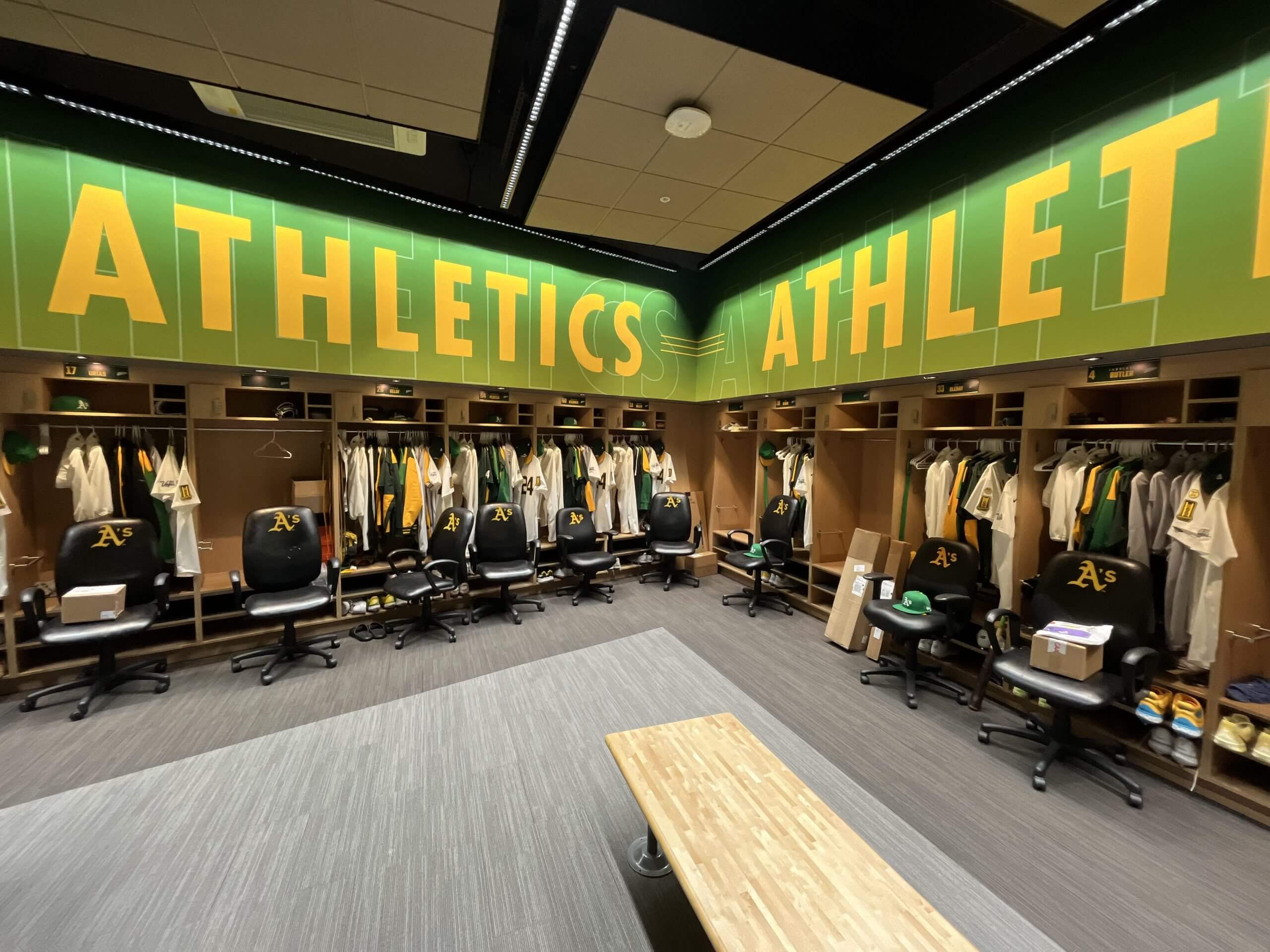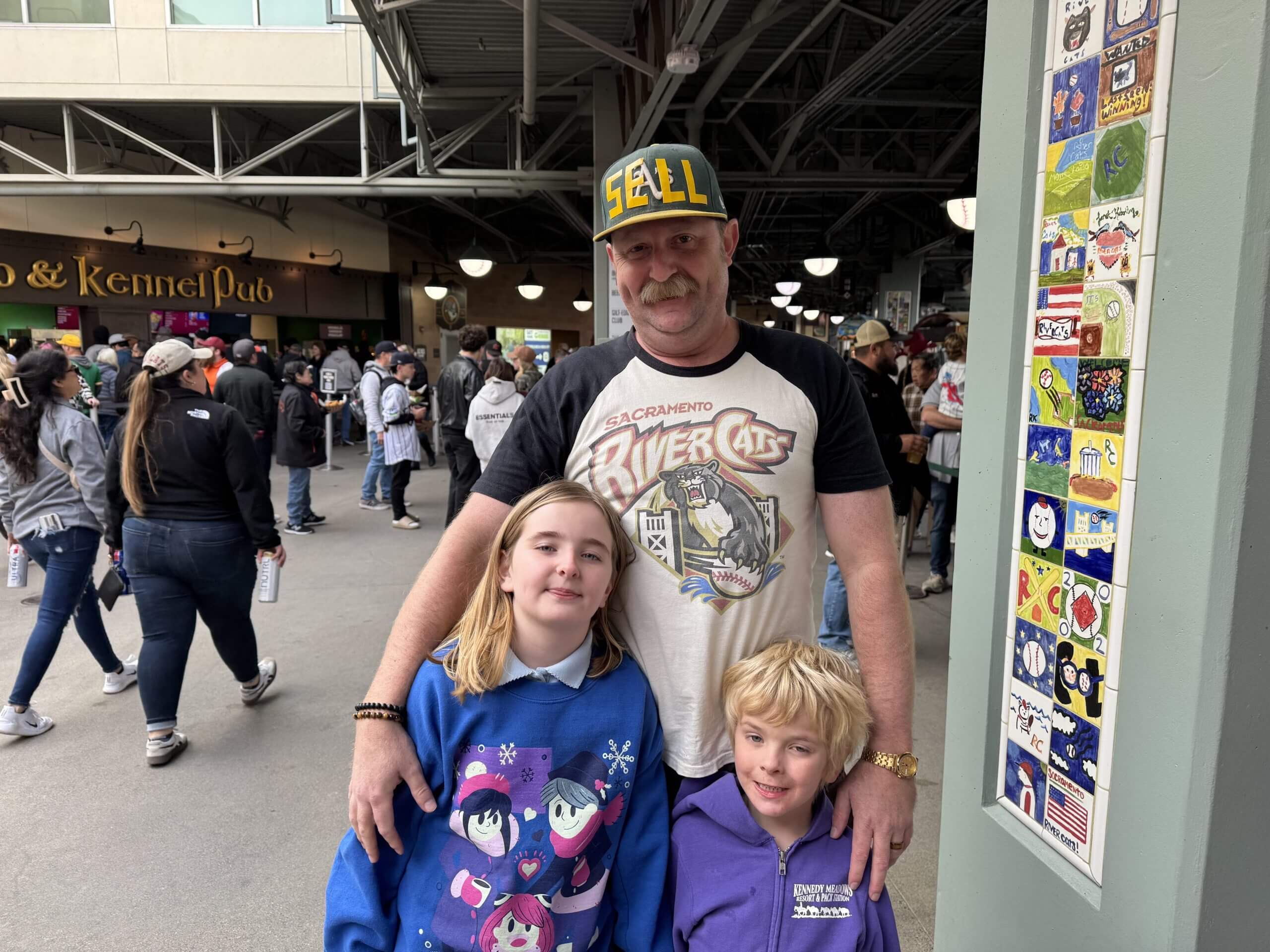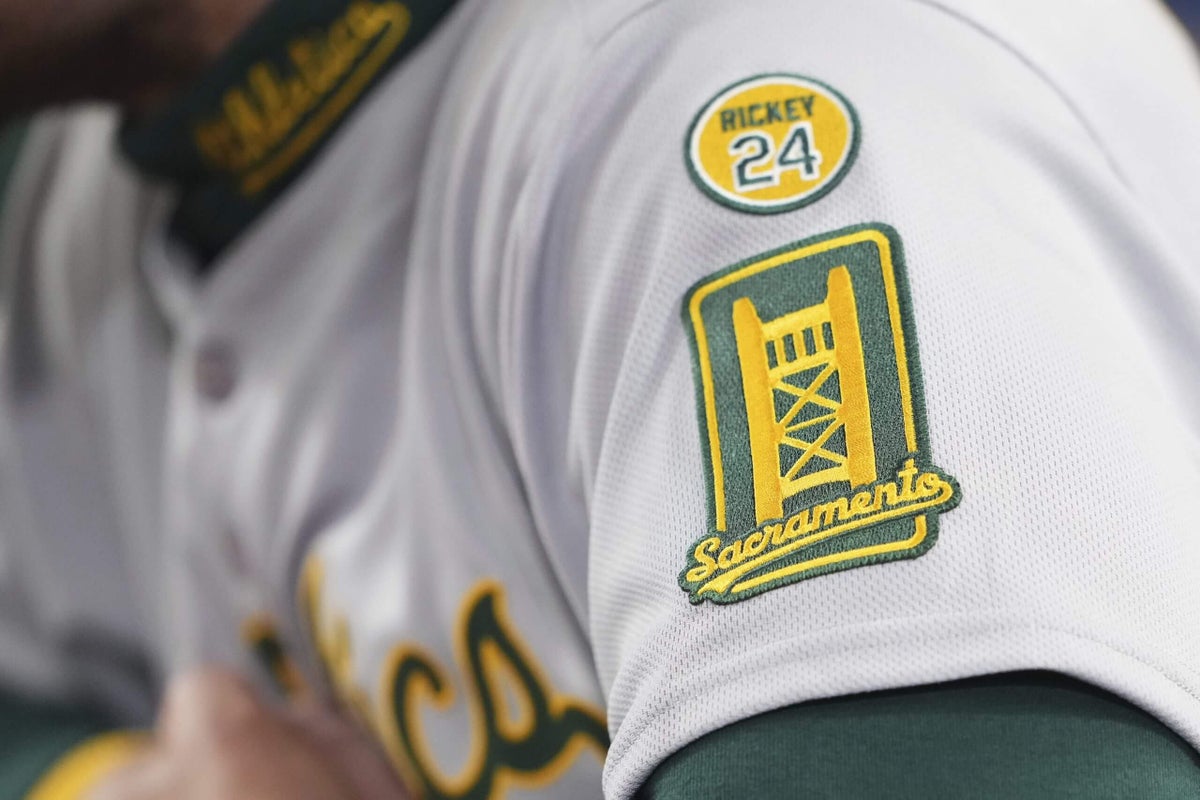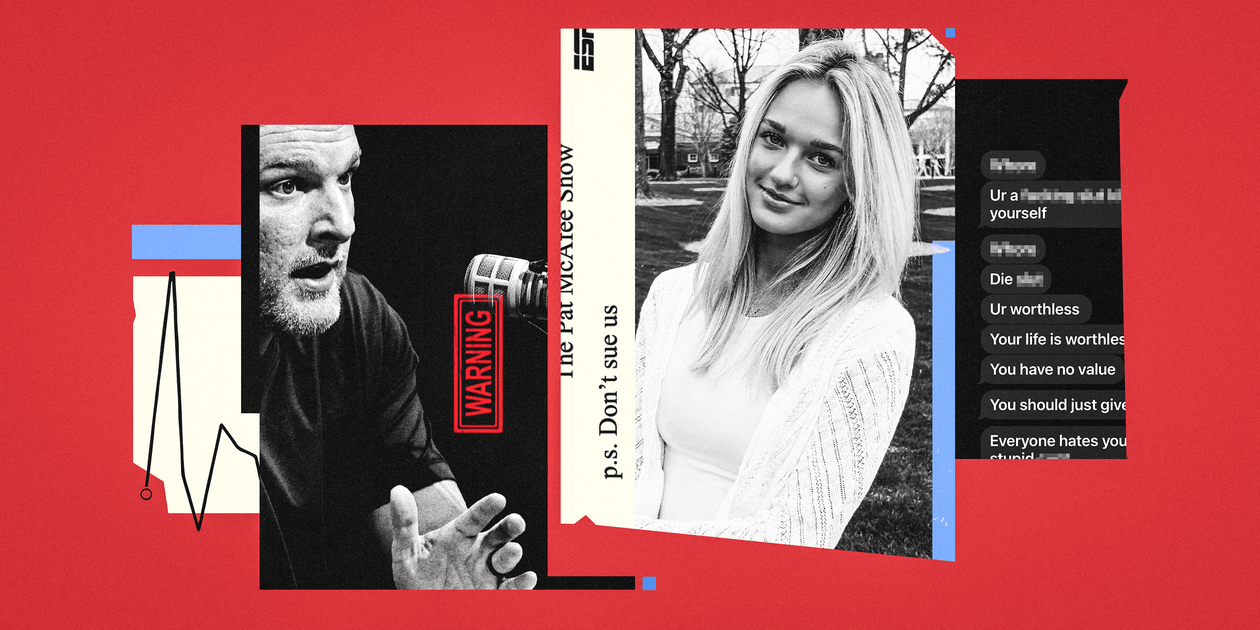West Sacramento Welcomes the A’s: A New Era in Baseball

WEST SACRAMENTO, Calif. — The most striking distinction between major-league and minor-league stadiums is their height. The recently renovated Sutter Health Park, now home to the Athletics, embodies the characteristics of a minor-league venue with its single main level and a second concourse primarily featuring suites. However, in a city that has never regularly hosted Major League Baseball, the A’s are optimistic that this intimate setting will create a unique attraction.
Standing behind the press box on the park’s top floor just a couple of days ago, Steve Sax, a veteran of 14 major-league seasons and now a television commentator for the A’s, reflected on his roots. “I grew up in West Sacramento, just three miles as the crow flies, about four miles that way,” Sax remarked, gesturing towards the horizon. “We were farmers. When you fly into Sacramento, the farmlands are visible. As a kid, I had so many dreams of playing big-league baseball. I thought, ‘If only someday they could have baseball in Sacramento, it would be incredible.’ Little did I know that not only would they have baseball, but it would be in West Sacramento. It’s absolutely mind-boggling to me.”
The A’s are set to kick off their first of at least three seasons here tonight in a sold-out match against the Chicago Cubs, with an anticipated crowd of 13,416 at a stadium that underwent significant modifications over the winter to welcome its new tenants. This marks the A’s first season outside of Oakland in 57 years, serving as a temporary home while plans for a new stadium in Las Vegas unfold.
Although West Sacramento is a separate municipality from Sacramento, the larger city is less than a ten-minute walk across the Tower Bridge. Sax noted a palpable buzz in both areas regarding the A’s arrival. However, during the four days spent in the area by a reporter from The Athletic, the overall reception felt somewhat subdued and tentative, akin to the awkward early moments of a middle-school dance.
The A’s will share the ballpark with the Triple-A Sacramento River Cats, who commenced their season with three games over the weekend. Notably, there was little visible evidence at the ballpark of the impending arrival of a more prominent team, apart from a purple “Las Vegas” tourism advertisement displayed on the outfield wall. Sutter Health Park will serve as the A’s home for at least the next three years.
Across the city, A’s green-and-gold apparel was surprisingly scarce. In Sacramento’s Old Waterfront, a tourist hotspot adorned with vintage trains and restored Gold Rush-era buildings, only a single large “Welcome” banner addressed the A’s specifically. Stores like the chain outfitter Lids were still selling A’s shirts emblazoned with “Oakland,” the city from which the A’s have recently departed. Other retailers offered unofficial “Sactown Athletics” hoodies and tees.

- The A’s prefer to be recognized simply as the Athletics or A’s during their time here, rather than as the Sacramento A’s, until they establish a new identity in Vegas.
- Their uniforms will feature a Sacramento patch on one sleeve and a Vegas patch on the other, but will display “Athletics” across the front.
Mayor Kevin McCarty of Sacramento expressed his sentiments: “I’m calling them the Sacramento A’s. I plan to buy myself a Sacramento A’s jersey and hat very soon. They may not officially call themselves that, but we can.” He added, “West Sacramento might refer to them as the West Sacramento A’s, which is fine. What matters is that they’re here. Professional baseball has arrived.”
However, the situation is not without its complexities.
Over the weekend, the intricacies of the A’s and River Cats’ stadium partnership became apparent. Their arrangement is quite unusual: they both share the costs associated with Sutter Health’s construction and improvements, and they will also share some of the A’s revenues this season, according to A’s vice chairman Sandy Dean, who did not disclose specific percentages.
“In less than a year, the A’s and River Cats collaborated on the conception, design, and implementation of all the enhancements made to Sutter Health Park, including a technologically advanced grass field, a new scoreboard, upgraded lights, and a new batter’s eye,” Dean stated, who holds a minor stake in the team. “There’s a new concessionaire, and upgrades have been made to club seating. Infrastructure improvements for a major-league quality broadcast and sound system have also been implemented.”
The total cost of the renovations exceeded $40 million, according to sources familiar with the details who wished to remain anonymous.
Yet, the River Cats are not the only team the A’s must collaborate with in their new environment. Their decisions ultimately run through the Sacramento Kings of the NBA, as both the River Cats and Kings share ownership under Vivek Ranadivé.
“Achieving all of this from start to finish and being ready for Opening Day on March 31, 2025, is a significant accomplishment for the River Cats and Kings,” Dean remarked.
In the days leading up to the A’s debut, the teams engaged in a delicate game of political negotiations concerning who could publicly discuss the construction work completed. The A’s relocation has long been a sensitive topic, and these sensitivities persist in their new town.
The A’s take pride in the enhancements made to the stadium, especially considering the short timeframe they had to work with, and their efforts appear genuine. A new two-story home clubhouse, designed with input from the A’s daily clubhouse staff, and a brand-new grass field have been introduced. However, the A’s did not oversee day-to-day operations at the park; that responsibility lay with the River Cats and Kings. Kings spokesperson Kari Ida indicated that The Athletic could speak with one of their executives only if the quotes were approved in advance for publication. The Athletic declined to conduct an interview under those conditions.
The Kings have rarely commented publicly regarding the stadium project, a curious choice given that Ranadivé and other Sacramento stakeholders wish to showcase the city as capable of hosting a permanent MLB team that won’t be leaving in a few years. “We genuinely believe this will be a trial run for us to demonstrate that Sacramento can support two professional sports teams,” stated McCarty. “We’ve successfully supported the Kings for the past 40 years, through thick and thin. Naturally, the A’s have their arrangements in place to start constructing a stadium in Nevada. Some may argue that’s not finalized yet, but it’s likely happening. However, expansion is a possibility, as the commissioner of baseball recently mentioned the word ‘expansion’ during a visit, which really caught my attention.”
One of the early controversies surrounding the A’s relocation involved the type of field to be used. Initially, both MLB and the team planned to install synthetic turf, but players and their union successfully campaigned for a switch to natural grass. Players generally find grass to be less taxing on their bodies and cooler to play on.
“It’s no secret that players prefer natural grass across the board,” said Murray Cook, president of BrightView Sports Turf and MLB’s official field consultant. “Everyone knows that, and athletes are aware of it.”
Cook indicated that while synthetic turf could be viable, advancements in natural grass have led to characteristics typically associated with turf, such as enhanced durability. Conversely, turf has evolved to exhibit more grass-like qualities. Durability is a primary concern given that two teams will share the field nearly every day for six months, as major-league fields are expected to maintain a pristine appearance without browning or wear, especially during Sacramento’s hot summers.
The River Cats will host games when the A’s are on the road, and some of their home games have even been relocated to Tacoma, Wash., in June to allow for resodding. The installed grass is Tahoma 31 Bermudagrass, which Cook explained greens up earlier in spring and retains its color longer into winter. It has been overseeded with a rye grass variety that thrives at lower temperatures, enhancing the field’s appearance earlier in the season. An air pump system is also in place to promote growth and facilitate drying after rain.

Contingency plans are established. Cook noted that the league has access to a second overseeded rye field for repairs and a third field that consists solely of Bermudagrass. “It’s somewhat uncharted territory to have a major-league team and a minor-league team sharing a field for an entire season,” Cook commented.

To Ian Webster, a college student sporting an A’s shirt on Saturday, the local sentiment appears polarized regarding the new baseball team. “It feels like people are either indifferent or extremely passionate,” Webster observed. “There are very few who are just like, ‘Oh, cool. The A’s are coming to town.’ You either don’t care, or you’re thrilled they’re here, or you’re upset about their move.”
On Friday, during the River Cats’ home opener, only a handful of fans donned Athletics gear at Sutter Health Park. This was not particularly surprising, as the River Cats are currently affiliated with the San Francisco Giants, their Bay Area rivals. Nevertheless, there are numerous A’s fans in the area, many of whom are delighted at the prospect of seeing their team more frequently. “I’m excited because we don’t have to drive all the way to Oakland to see the A’s play,” exclaimed 10-year-old Ezekiel Velez, whose all-time favorite player is the late Rickey Henderson. “Now, we don’t have to drive for an hour and a half, two hours, just to catch a game.”
Keefe Mahar, attending the same day with a River Cats shirt and a standard green A’s cap, made a notable modification: yellow tape spelled out the word “Sell” over the team’s logo. “It’s a mixed bag,” Mahar shared about his feelings regarding the team’s relocation. “I’m a lifelong A’s fan. I wish they would have stayed in Oakland. But it’s also great that they’re so close now. I can ride my bike over and catch a game.”
Neither Mahar nor Annjanette Branca, who works along the waterfront, had kind words for A’s owner John Fisher. While Fisher and the A’s maintain they did everything possible to remain in Oakland, many fans remain unconvinced. The level of protest inside the ballpark regarding the move this season remains one of the significant uncertainties as the A’s embark on their Sacramento journey.
Ultimately, both home and visiting players will assess the renovations alongside the fans. The A’s are not struggling to sell tickets; their season-ticket allotment has reportedly sold out at around 6,000. Ranadivé expressed his desire for the A’s to become the “most sought-after ticket in America” by 2024.
However, the broader challenge will be engaging those in the community who currently feel indifferent, at least for the moment. Beth Devine, a rideshare driver in the area, mentioned her sole interest in the A’s arrival is to see the New York Yankees play. “I think people are more invested in Sac Republic, to be honest, which is the soccer team,” Devine remarked during a ride to the park last week. “I don’t think they care much about the A’s because they aren’t ‘the Sacramento A’s.’ It’s just a three-year stint. The people here are like, ‘What if they stay? Wouldn’t that be awesome?’ That’s the sentiment. Sacramento feels like the bridesmaid in this scenario.”
(Top photo of the Athletics’ new jerseys: Lindsey Wasson / Associated Press)

